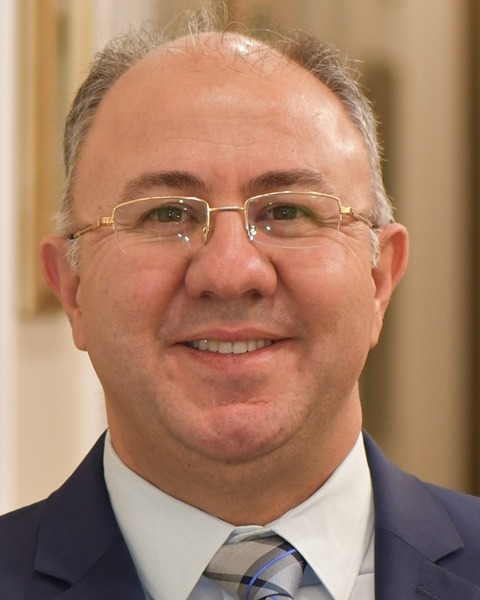Hands-On Workshop
Workshops & Seminars - Ticketed Sessions
Simplifying Full Arch Screw-retained Implant Rehabilitation With the Rapid Digital Conversion (203)
Wednesday, November 1, 2023
1:30 PM - 5:30 PM PDT
CE 3.0 hour(s)
AGD Code: 690 - Implants
Target Audience: Intermediate Knowledge
Course Fee: $249
Target Audience: Intermediate Knowledge
Course Fee: $249

Rami Salloum, DDS, FAAID, DABOI/ID
Bethlehem, Pennsylvania, United States
Disclosure(s): No financial relationships to disclose
Introduction: Tooth loss has significant effects on a patient's appearance, function, and overall health. Implant-supported prostheses have been shown to improve patient satisfaction and quality of life, and same-day delivery of these prostheses is extremely advantageous. However, conventional methods for implant-supported full-arch prostheses are time-consuming, expensive, and error-prone. Extraoral scanning and Immetric 4D imaging have been proposed as alternatives, but the necessary equipment is uncommon. This course presents a new, streamlined technique for fabricating precise implant-supported full-arch prostheses on the day of surgery or when implants are ready to be restored.
Course
Objectives:
By the end of this presentation, participants will:
Compare the benefits and indications of the novel digitally-based, verifiable, interdisciplinary protocol (R_D_C_M) with those of other conversion protocols for immediate full-arch implant reconstruction.
Understand the anterior scanning appliance (ASA), its clinical applications, how to fabricate it, and its benefits.
Learn how to gather all the necessary information for the lab to design, print, or mill a provisional prosthesis with or without metal sleeves.
Acquire skills in designing a prototype using Exocad design software.
Gain knowledge on printing, processing, verifying, staining, and delivering provisional prostheses and how to convert them to the final restoration with the material of your choosing.
Learn the benefits of the R D C M protocol digital workflow compared to other workflows for both provisional and permanent prosthesis fabrication.
In addition to understanding the limitations and complications of the conversion denture protocol, it is important to comprehend the R D C M protocol.
Course
Objectives:
By the end of this presentation, participants will:
Compare the benefits and indications of the novel digitally-based, verifiable, interdisciplinary protocol (R_D_C_M) with those of other conversion protocols for immediate full-arch implant reconstruction.
Understand the anterior scanning appliance (ASA), its clinical applications, how to fabricate it, and its benefits.
Learn how to gather all the necessary information for the lab to design, print, or mill a provisional prosthesis with or without metal sleeves.
Acquire skills in designing a prototype using Exocad design software.
Gain knowledge on printing, processing, verifying, staining, and delivering provisional prostheses and how to convert them to the final restoration with the material of your choosing.
Learn the benefits of the R D C M protocol digital workflow compared to other workflows for both provisional and permanent prosthesis fabrication.
In addition to understanding the limitations and complications of the conversion denture protocol, it is important to comprehend the R D C M protocol.
Learning Objectives:
- Compare the benefits and indications of the novel digitally-based, verifiable, interdisciplinary protocol (R_D_C_M) with those of other conversion protocols for immediate full-arch implant reconstruction
- Understand the anterior scanning appliance (ASA), its clinical applications, how to fabricate it, and its benefits; and acquire skills in designing a prototype using Exocad design software
- Learn how to gather all the necessary information for the lab to design, print, or mill a provisional prosthesis with or without metal sleeves
- Gain knowledge on printing, processing, verifying, staining, and delivering provisional prostheses and how to convert them to the final restoration with the material of your choosing
- Learn the benefits of the R D C M protocol digital workflow compared to other workflows for both provisional and permanent prosthesis fabrication
